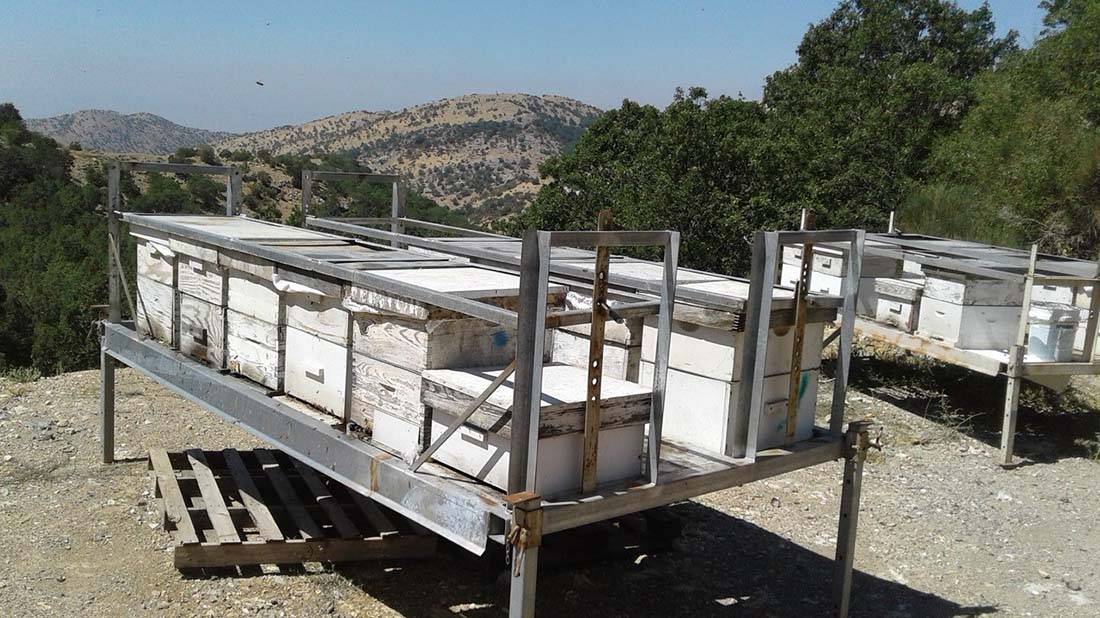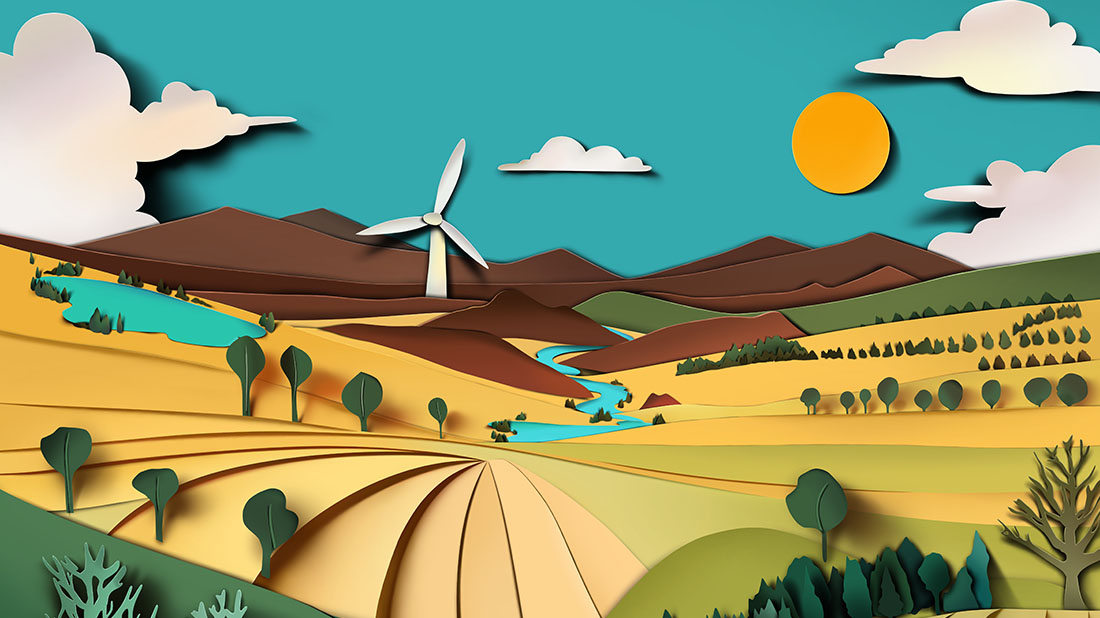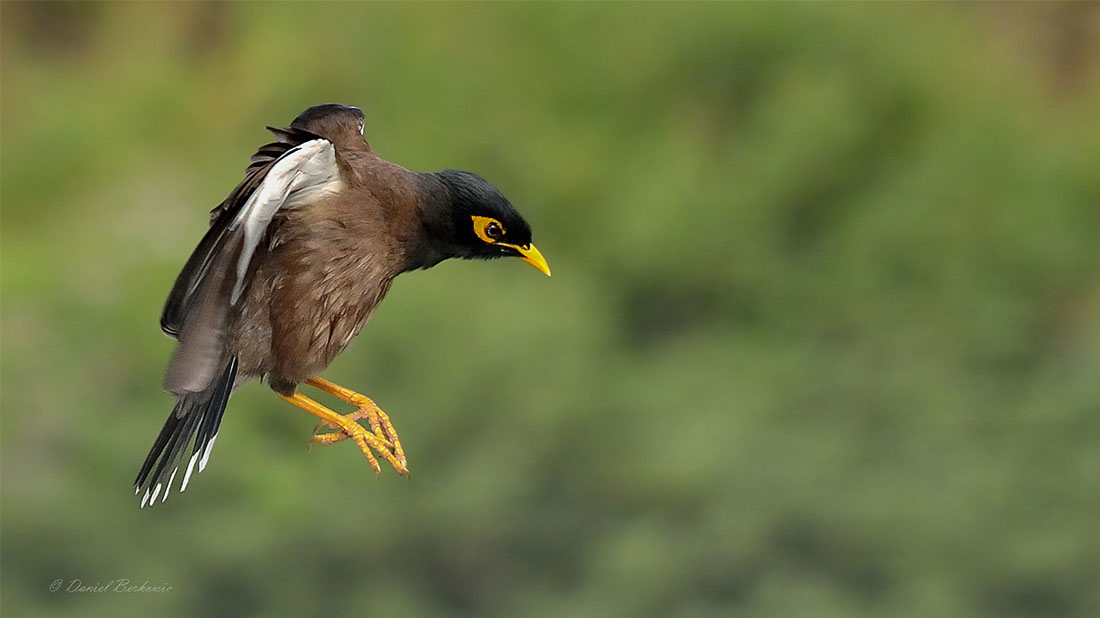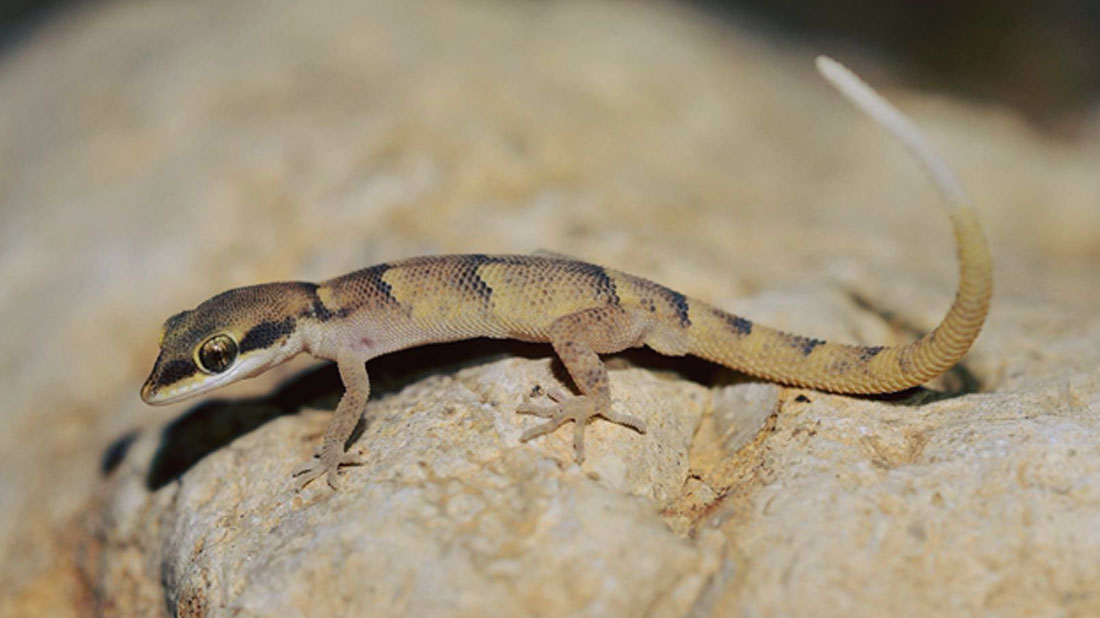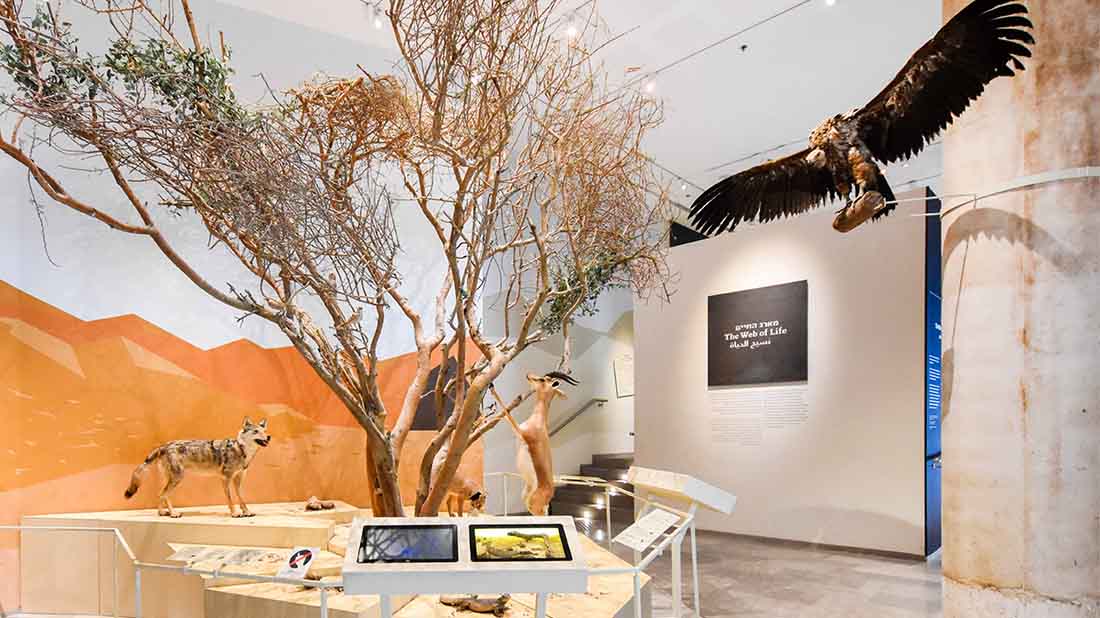Intensive rearing of honey bees in beehives is threatening the ecosystem of Mt. Hermon Nature Reserve
The honey from Mt. Hermon is considered, in some cultures, to prolong male sexual potency, and is thus sold at twice the price of the honey produced in any other place. As a result, large apiaries, numbering about 3 million honey bee workers, have been installed all over Mt. Hermon. One apiary, for example, contained 48 beehives; about 10 kg of wildflower pollen is collected by each one during the flowering season. However, not all bees produce honey. The honey bee is probably the most well-known and studied insect in the world, due to its great importance for pollinating agricultural crops. However, there are many other species of wild bee that do not produce honey – about 1,000 of them just in Israel – and their importance for pollinating wild plants is usually greater than that of the honey bee. The amount of pollen exploited by each apiary on Mt. Hermon could suffice to support more than 5 million offspring of average-sized wild bees. Instead, the pollen is exploited by a disproportionate amount of honey bees from commercial apiaries; thus, the wild bees are being displaced.
This is the story of one species of bee that was domesticated by humans; its great commercial expansion is leading to the displacement of many other species whose importance for ecosystem conservation is tremendous.
All of the honey bees currently in Israel belong to imported agricultural varieties that are bred by humans; similarly to other farm animals, they cannot survive in nature without human assistance. Many studies show that honey bee grazing, namely, installation of man-made beehives in open landscapes in nature, may have a negative impact on wild bee populations due to overexploitation of the limited quantities of nectar and pollen produced by the flowers. Moreover, the intensity of grazing by livestock, such as cattle, sheep and goats, is greater than that of honey bees, thus it may lead to rapid domination by spiny plants and nitrophilic plants (plants that can grow on soil enriched with nitrogen from cattle feces) resistant to grazing. In other words, uncontrolled grazing by cattle and honey bees in open landscapes may limit the number of flowers available to wild bees and thus further decrease their foraging area. Harm to wild bees and other natural pollinators, such as hoverflies and butterflies, will also bring harm to the wild plants, and may lead to deterioration of the entire ecosystem.
Nature reserves usually act as a last refuge for wild plants and animals. Therefore, grazing inside nature reserves, if necessary, should be done with great care and consideration for all of the biodiversity existing in a given nature reserve. A clear example of this is Mt. Hermon Nature Reserve. Mt. Hermon is characterized by a composition of plants and pollinators that is unique in Israel and the world, and it is a habitat for many species of plants and animals, some of which are rare due to the prevailing climatic conditions and its geographical location. Unfortunately, these unique natural assets are under threat because of overgrazing by both cattle and honey bees.
The main body allowing grazing is the ski site located as an enclave at the heart of Mt. Hermon Nature Reserve. Cattle grazing also takes place on Mt. Hermon, including a permanent cattle pen near Man Pool, a natural sinkhole formation (a depression that drains precipitation and is characterized by an extended season of rich flowering) that has long been a cattle pool, and that unfortunately is visible to visitors traveling along the access road to the ski site.
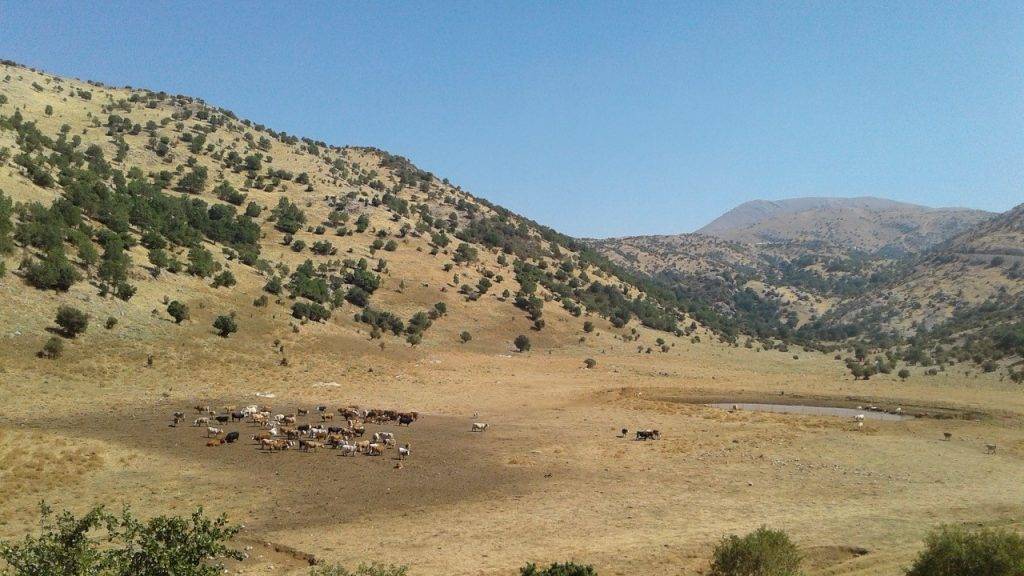
Man Pool. Photo: Dr. Achik Dorchin
From the cattle pens, the cattle move freely and reach the heights of Mt. Hermon, including the most distance sites at a height of over 2,000 m.
In addition to cattle grazing, numerous beehives have been positioned in the grounds of the ski site, from the ticket offices and the Mt. Hermon Brigade area up to Mt. Shaked at a height of about 1,900 m. From there, the honey bees easily make their way to all parts of the nature reserve.
As part of the wild bee survey that we conducted in spring 2019, I observed an apiary on Mt. Shaked that numbered 48 beehives; at the height of its activity each beehive contained about 60,000 honey bee workers, for a total of 2,880,000 workers. This number is much greater than the total number of wild pollinators that may be found simultaneously at a given site. Precise calculations demonstrated that the amount of wildflower pollen collected by a single beehive for three months during spring reaches 10 kg on average (dry weight).This amount of pollen is enough to support 110,000 offspring of average-sized wild bees. This means that an apiary such as the one observed on Mt. Shaked will exploit 480 kg pollen for three months; this is sufficient to support 5,280,000 offspring of average-sized wild bees. Honey bees and their apiaries consume the food available for wild bees inside the nature reserve, and thus are likely to cause population decline and even local displacement of species (i.e., disappearance of those same species from the area).
The density of the beehives in Mt. Hermon Nature Reserve has increased greatly in recent years (I have been following the beehives since 2005) due to the high price of the honey produced on Mt. Hermon.
There are some who claim that honey bee grazing provides an important service to nature because the bees pollinate plants. Now is the time to redress the situation: the natural pollinators supply the pollination needs of the wild plants; thus, intensive grazing by honey bees does not provide the necessary service to nature, but rather causes significant harm to the populations of natural pollinators.
The case of Mt. Hermon is one example of a broad phenomenon of exploiting natural resources for commercial needs to the point of destruction of the entire ecosystem. In order to change this, we must respect nature and include its conservation our web of political, cultural and commercial considerations.


